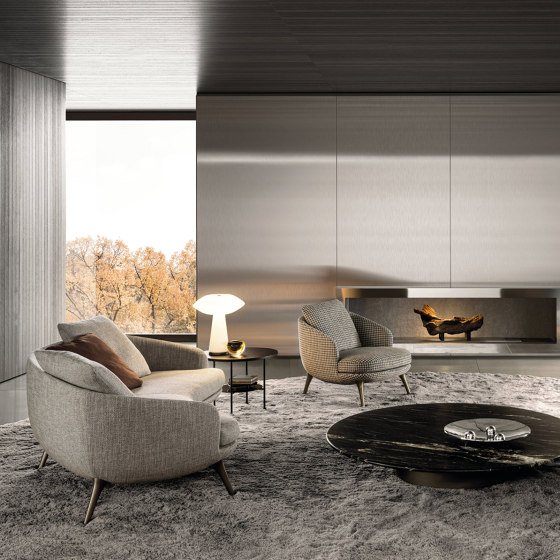Dear Architects: Tensile Membranes Can Be Timeless, Not Just Temporary
The winners of this year’s A+Product Awards have been announced. Stay tuned for the year’s edition of the A+Product Awards ebook in the coming months.
Tensile structures are an innovative and exciting part of architectural development. Their unconventional designs attract attention. Boosted by technological innovations, these complex structures are pushing the boundaries of architectural and engineering creativity. In recent years, they have become more flexible, lightweight and energy-efficient thanks to new materials offering improved physical properties and excellent performance.
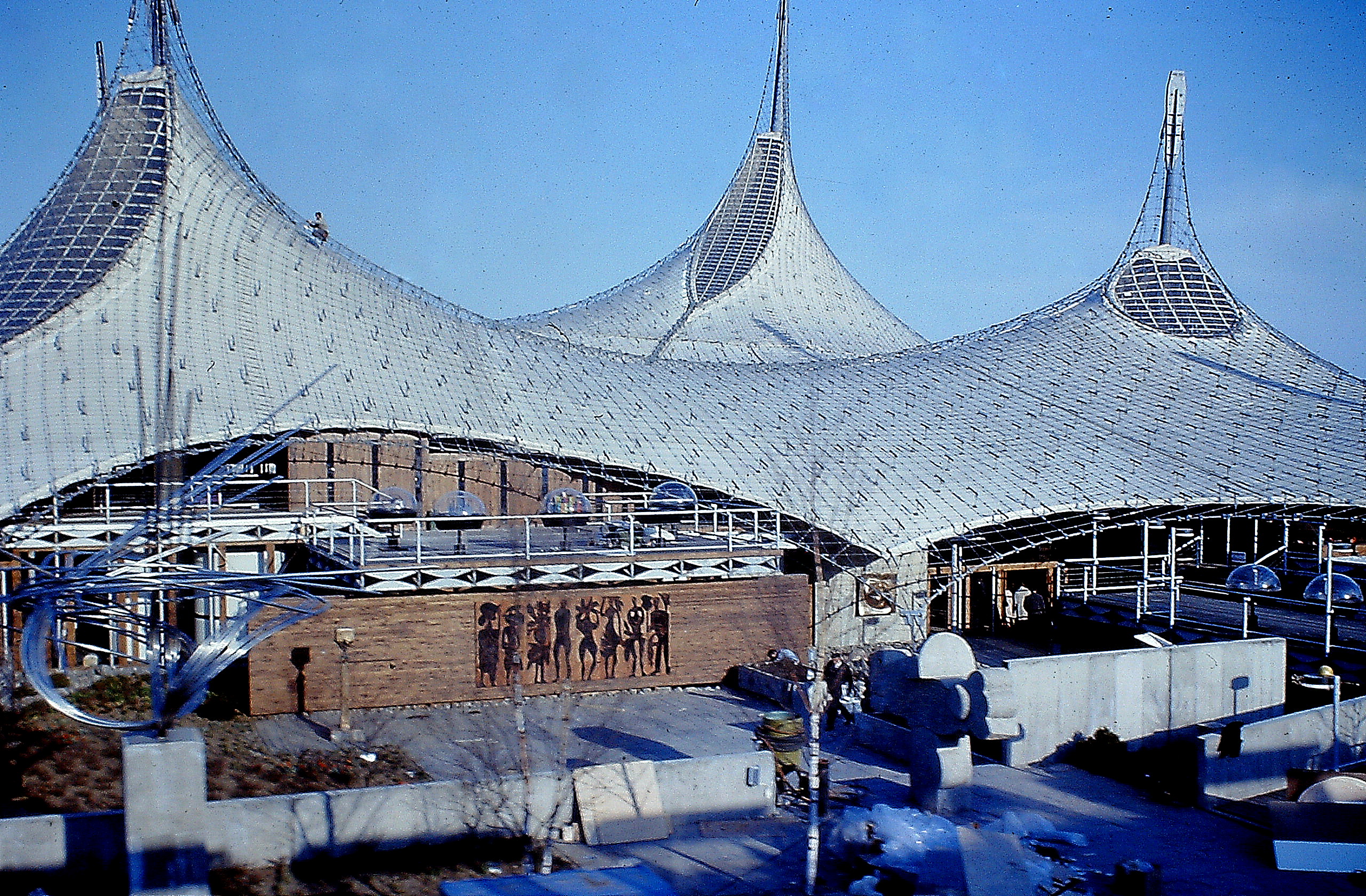
German Pavilion by Frey Otto, Expo ’67 in Montreal, Canada. Image via Wikimedia Commons.
So much has happened in the technological arena since the early tensile fabric structures. The German Pavilion at Expo ’67 in Montreal, Canada was an extraordinary achievement. Since then, architects and engineers have exploited the tensile structures as roof enclosures and canopies in airports, sports stadiums, pavilions and event centers. While this design practice could perhaps be seen as an architectural trend, it has in fact evolved to represent a change in how the building envelope is perceived.
Cutting-Edge Innovations
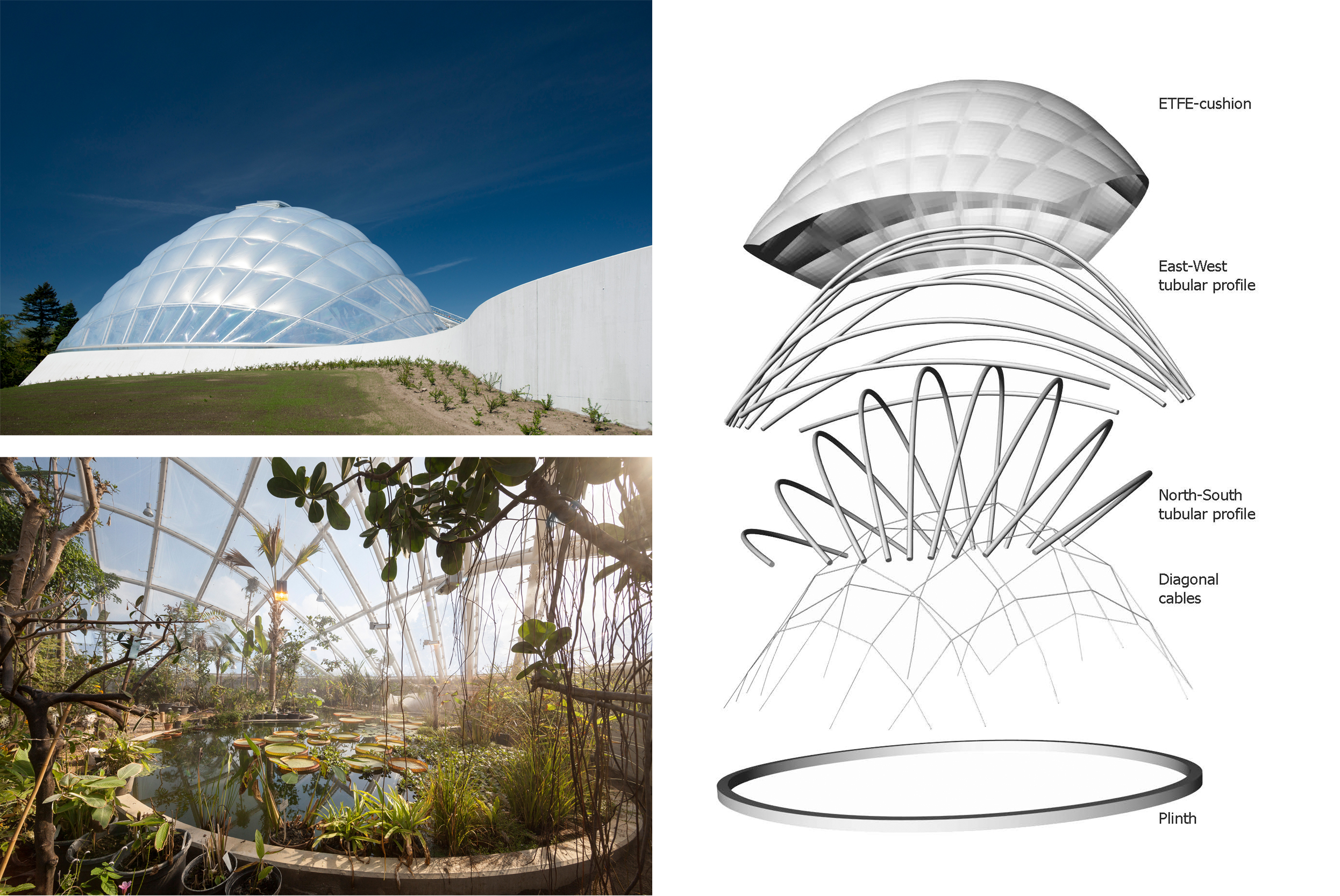
Greenhouse in the Botanic Garden, University of Aarhus, Denmark. Project by C.F. Møller Architects. Images by Julian Weyer (top) and Quintin Lake (bottom). Drawing C.F. Møller Architects.
With technological advances, tensile structures are quickly expanding toward more complex membrane systems, including their use as tensioned single-layer or air-filled pneumatic cushions. Tensile membranes can create complex curved building envelopes that are durable and resistant.
They are becoming more lightweight, flexible and able to provide waterproofing, shade and insulation. As the technology advances, there is increasing potential for tensile membranes to be filters responding to environmental factors, such as weather and pollution. Innovative materials such as nano fibers and intelligent fabrics can integrate photovoltaic cells and active shading systems into the building envelope.
A Unique Architectural Vocabulary
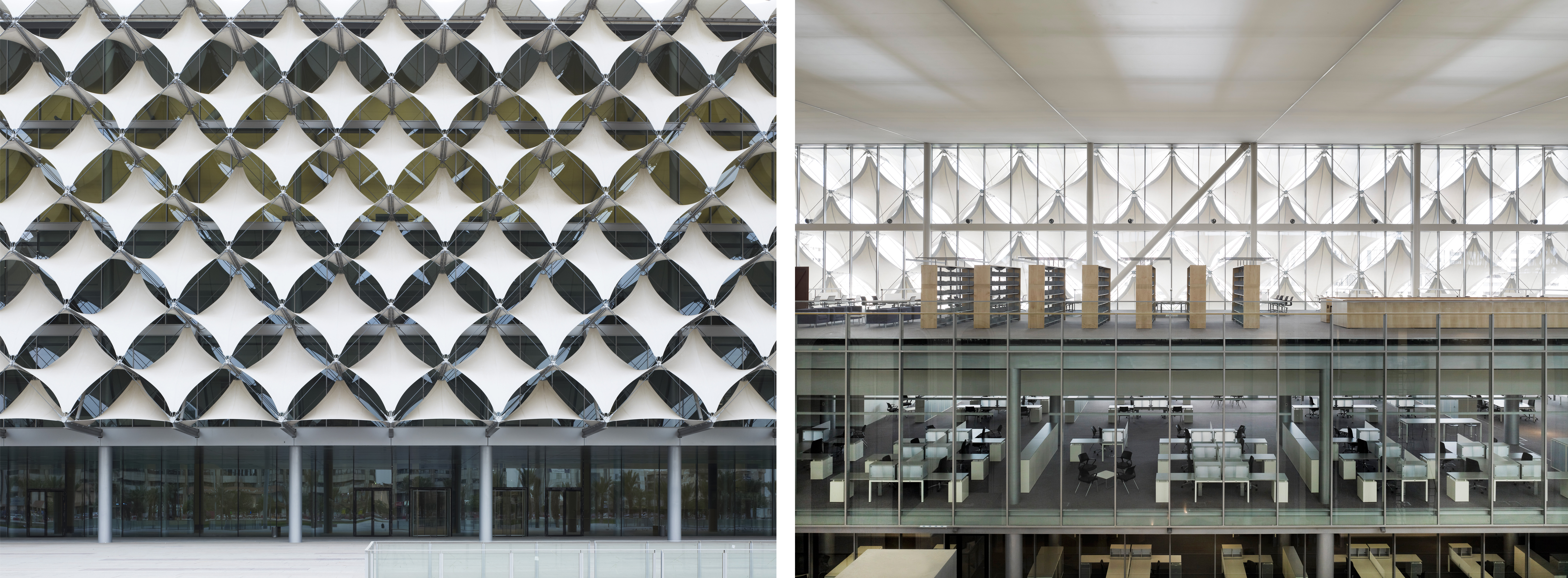
King Fahad National Library Riyadh, Saudi Arabia, Project by Gerber Architekten. Images by Christian Richters.
Tensile structures are pushing architects to reassess the very concept of transitioning between the exterior and the interior of buildings. They can be membranes detached from the building’s structure or wall and roof membranes as seamless building skins. Form and transparency, two significant characteristics of tensile membranes, generate exceptional protected spaces that convey the sensation of an open-air experience.
Architects and engineers thrive on the exhilarating challenge of integrating aesthetics and technology to produce fascinating structures. The design of tensile membranes has become an established discipline with a language of its own and is certainly on an exciting path of endless creative opportunities.
Beacons of Urban Revitalization
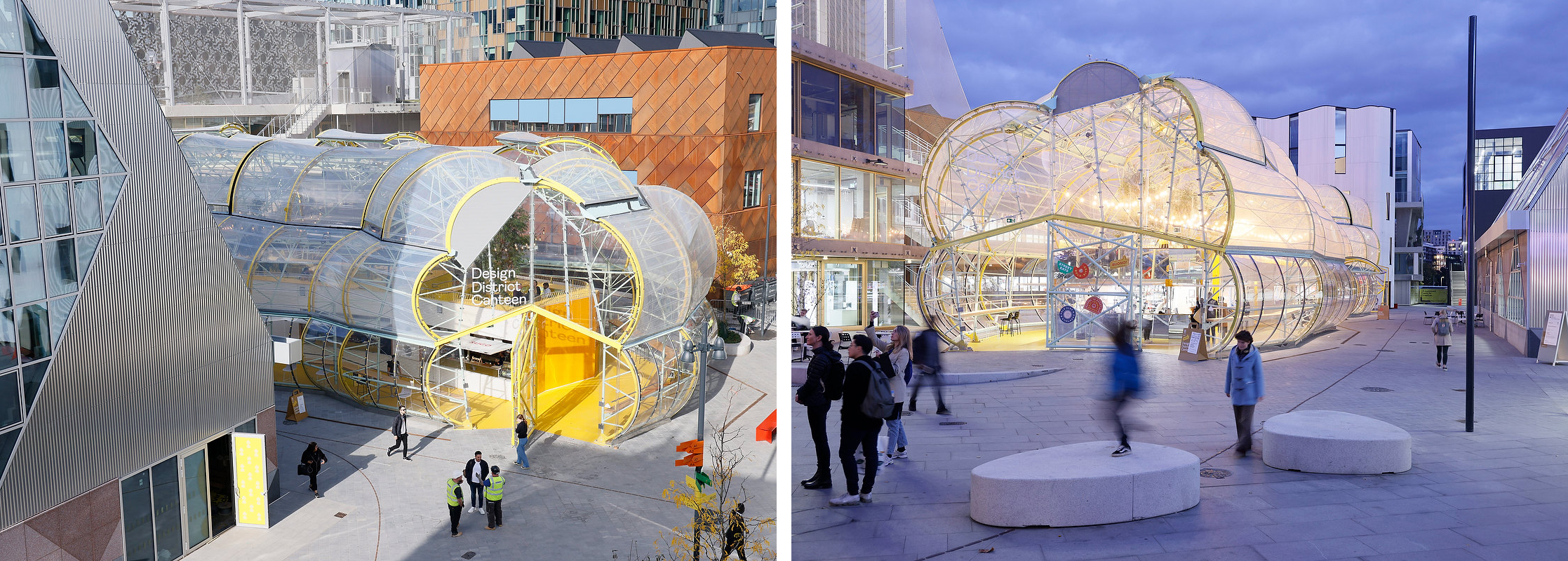
Design District Canteen by selgascano. Images by Iwan Baan.
Tensile structures produce inherently unique forms with high visual impact, as the examples in An Architect’s Guide To: Tensile Fabrics demonstrate: “Today’s architects are harnessing tensile fabric structures in the form of sweeping roofs, dramatic canopies and dismountable and relocatable pavilions.”
The endless design opportunities that tensile structures have to offer enable architects and engineers to experiment and create exciting signature projects. In turn, cities and communities see these structures as focal points that are beneficial to the economic and social activity of urban areas, able to address the specifics of the place, thereby expanding its uses while boosting local identity. Interesting spatial geometries are enhanced by transparency and light, creating beacons of urban revitalization. Compare the following examples, which indicate that the visual appeal of tensile structures successfully creates attractive gathering places and revives interest and excitement in neglected areas.
London’s Design District Canteen is a new market at the main pedestrian access to the Greenwich Peninsula. The eye-catching design, aimed at stimulating the area’s commercial activity, features a transparent, bulbous ETFE and polycarbonate shell wrapped around a central core. The core, which accommodates the market’s stalls at street level and a seating area above, combines bright yellow walls and translucent panels backlit at night to transform the market into a glowing beacon.
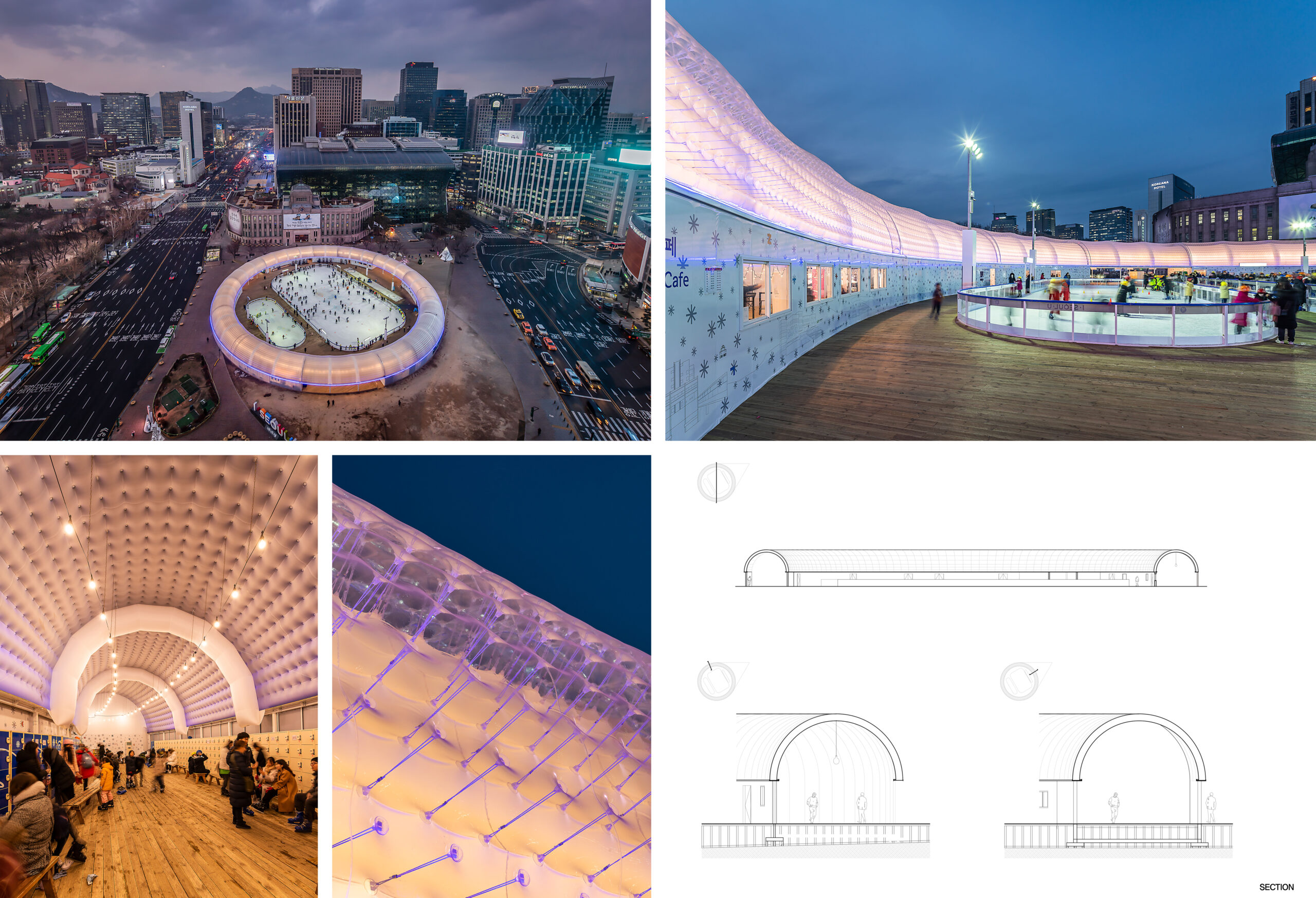
Seoul Plaza Ice Rink by CoRe Architects and Graft Object. Images by Taxu Lee.
Seoul Plaza is an open space that regularly accommodates events from public celebrations to political rallies. It is also a place where, citizens can seasonally enjoy winter sports such as skating and curling. In 2018, the Seoul Metropolitan City Sports Council commissioned the redesign of the Seoul Plaza Skating Rink through a public competition. The winning entry, a design of CoRe Architects in collaboration with Graft Object, features a double air-membrane system conceived as a “new structural alternative”, which allows for a quick setup and dismounting. An outer layer of transparent laminated urethane and an inner layer of opaque urethane are tightened with Paracord – tensile strength cord – to form the dome-shaped roof rink. The skating rink addresses its emblematic location in front of Seoul City Hall and the Seoul Library.

DSSH Bridge by sanzpont [arquitectura]. Renderings by sanzpont [arquitectura].
Sanzpont [arquitectura]‘s DSSH Bridge won the WA Award, Cycle 11, as part of the Building to Building Pedestrian Bridge International Challenge competition. The proposed bridge, which links two buildings forming a pedestrian connection, is conceived as a cylindrical tensile membrane and double helix structure made of carbon fiber semi-flexible tubes. The tension applied to different points responding to the number of people crossing the bridge at a particular moment generates a dynamic deformation of the bridge. The design incorporates various sustainable features, including plants that clean and purify the air, foldable photovoltaic solar panels integrated into the tensile skin to generate and supply electricity and linear LEDs that illuminate the bridge at night, emphasizing the fluid and organic forms and enhancing the futuristic, spatial experience.
The Path Forward
The performance of tensile structures improves with technological advances in material and construction developments, while their architectural appeal forges a unique vocabulary. The same challenges to achieving structural integrity are also those offering architects and engineers exciting design opportunities to create attractive places that have the potential to boost urban activity. While these engineering marvels continuously delight us, we can’t help but wonder: has the potential of tensile structures been fully realized? Developing new forms and resolving technological challenges can be very complex, but it is a clear path forward.
The winners of this year’s A+Product Awards have been announced. Stay tuned for the year’s edition of the A+Product Awards ebook in the coming months.


